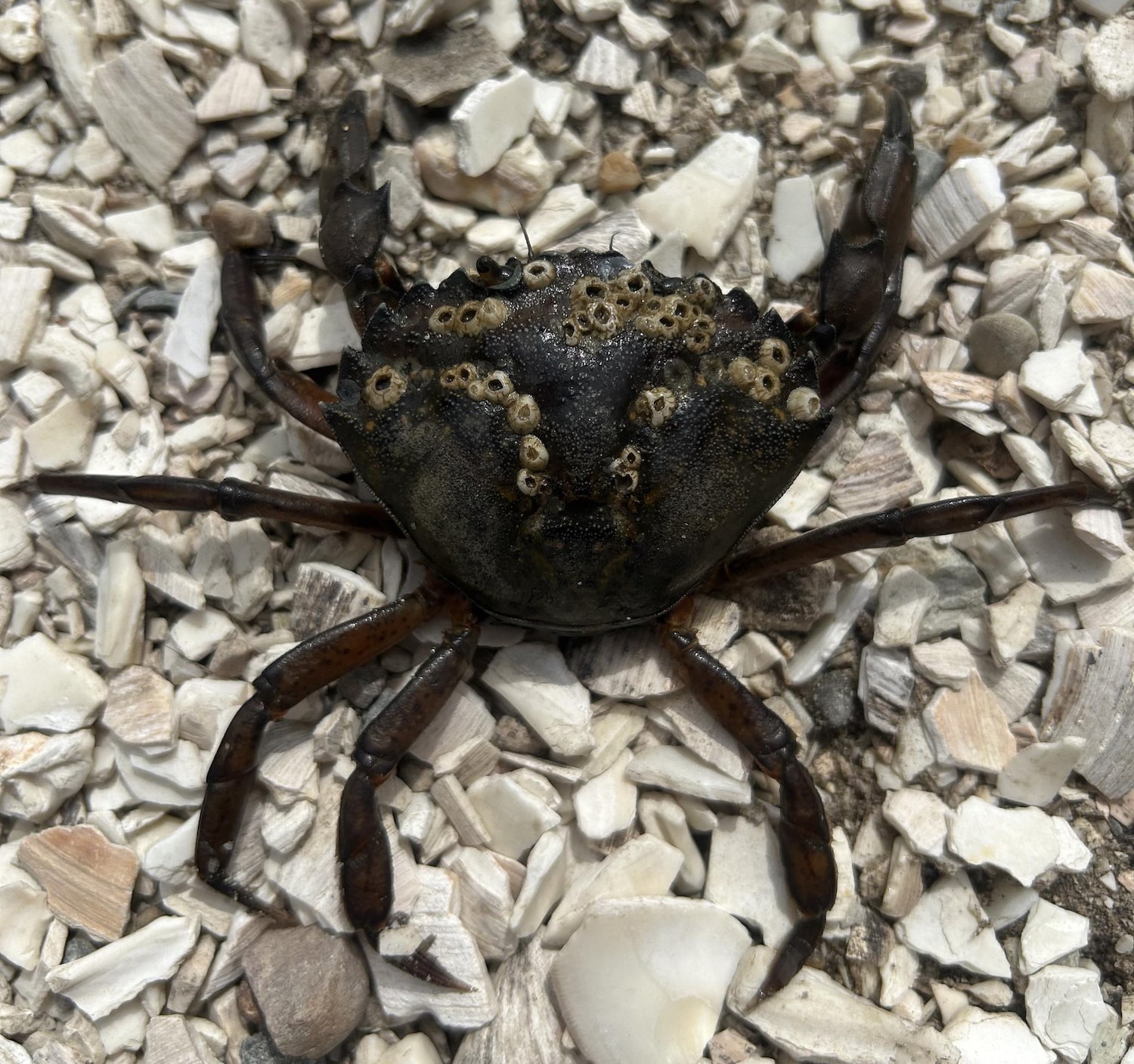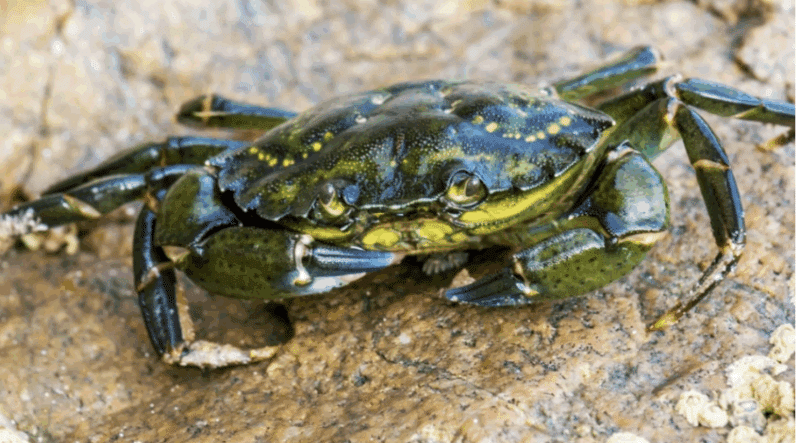The waters surrounding Nantucket Island are home to a complex ecosystem where an ongoing “habitat battle” plays out beneath the surface. At the center of this ecological drama is a small but formidable invader: the European green crab , a species that has fundamentally altered the marine environment since its arrival on North American shores more than two centuries ago.
Green crabs measure only about three inches across their shells. Despite their common name, these crabs can be from green to gray, yellow, or brown, with juveniles capable of changing color to match their surroundings. Adults typically sport dark greenish shells with yellow markings, while their undersides often flash bright red or yellow.
What makes this invasive species particularly dangerous is not its size, but its exceptional abilities as a predator. Green crabs are effective foragers with an impressive talent for opening bivalve shells. Research has shown them to be quicker and more dexterous than other crabs, and remarkably, they can improve their food-gathering skills over time—earning them the unsettling non-scientific distinction of being “learning crabs.”
The European green crab first appeared on the East Coast of North America in Massachusetts in the early 1800s, likely arriving as stowaways on ships from Europe. Their spread has been relentless and devastating. At the turn of the 20th century, this species essentially wiped out Maine’s soft-shelled clam industry and has been implicated in population reductions of bay scallops and quahogs throughout New England waters.
The green crab’s voracious appetite encompasses a wide range of organisms, including scallops, clams, oysters, mussels, and small crustaceans, making it a major competitor with native fish and bird species.

Rather than simply viewing green crabs as pests to be eliminated, the Nantucket community has developed innovative approaches to managing this invasive species while contributing to scientific understanding and practical solutions. The Maria Mitchell Association (MMA), in partnership with the Nantucket Land & Water Council, has organized an annual Green Crab Week, featuring events that use this invasive species problem as opportunities for community engagement and education.
This year’s Green Crab Week, running through August 9, offers islanders multiple ways to participate in green crab management, including chances to hunt, capture, and recycle green crabs. The week began on August 4 and 5 with identification and seining events.
On Thursday, August 7, from 10 am to 12 noon at the MMA Aquarium on Washington Street, residents can collect free green crab fertilizer kits. These kits include green crabs and instructions for creating environmentally friendly garden fertilizer—participants need only bring their own white vinegar. The same pickup location also offers green crabs for fishing bait, providing a practical use for the captured invasive species.
Friday, August 8, brings the community together for a hands-on citizen science experience. From 5 to 6 pm at The Creeks/Harbor Flats, Maria Mitchell Aquarium staff will lead a survey for invasive European green crabs using wading and hand net techniques. This survey contributes to the ongoing MMA Nantucket Green Crab Citizen Science Survey, which residents can participate in year-round.
The 2025 Green Crab Week ends this Saturday, August 9, with the Annual Green Crab Derby, a competitive event that runs from 12 am to 4 pm. Teams of up to four people can remove green crabs from local waters while competing for prizes. Register at mariamitchell.org/nantucket-green-crab-week Participants catch green crabs throughout the 16-hour period and drop them off at the Maria Mitchell Association Aquarium on Washington Street between noon and 4 pm.
The Nantucket Land & Water Council (NLWC) has collaborated with the Town of Nantucket Natural Resources Department and the Maria Mitchell Association to investigate the numbers and population dynamics of green crabs in Nantucket Harbor. The green crab is considered a delicacy in its European home waters- crabs are eaten soft-shell, a mainstay in soups and stews, crab cakes, and even the roe is a favorite of fishing communities along the Mediterranean sea. The NLWC hopes to bring the centuries-old tradition of cooking green crabs to Nantucket, supporting local businesses and helping solve an ecological problem wreaking havoc in our harbors. At greencrab.org, there are dozens of recipes using green crabs in soups, stews, with pasta, and more.
The community-based approach exemplified by Green Crab Week demonstrates how environmental challenges can become opportunities for education, engagement, and collective action. By turning green crab removal into community events, Nantucket is not only addressing an invasive species problem but also fostering greater awareness and appreciation of marine ecosystems.

